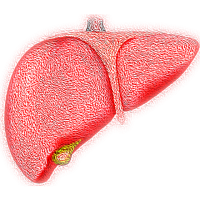Featured Products
- In-Stock Tumor Cell Lines
- Human Orbital Fibroblasts
- Human Microglia
- Human Pulmonary Alveolar Epithelial Cells
- Human Colonic Fibroblasts
- Human Type II Alveolar Epithelial Cells
- Human Valvular Interstitial Cells
- Human Thyroid Epithelial Cells
- C57BL/6 Mouse Dermal Fibroblasts
- Human Alveolar Macrophages
- Human Dermal Fibroblasts, Adult
- Human Lung Fibroblasts, Adult
- Human Retinal Muller Cells
- Human Articular Chondrocytes
- Human Retinal Pigment Epithelial Cells
- Human Pancreatic Islets of Langerhans Cells
- Human Kidney Podocyte Cells
- Human Renal Proximal Tubule Cells
Primary Cells
Explore Products



 Human Hepatic Stellate Cells (HSCs) are primary mesenchymal cells isolated from adult human liver tissue, representing a key component of hepatic non-parenchymal cell population. These perisinusoidal cells are characterized by their quiescent state under physiological conditions, characterized by cytoplasmic lipid droplets rich in vitamin A — storing over 80% of the body’s retinoid reserves. These cells are cryopreserved at earliest passage, ensuring high viability and minimal phenotypic drift. HSCs play essential roles in maintaining extracellular matrix (ECM) homeostasis, regulating vitamin A metabolism, and modulating hepatic microcirculation through interactions with endothelial cells and hepatocytes. HHSCs express molecular markers including desmin, glial fibrillary acidic protein (GFAP), and collagen type I alpha 1 chain (COL1A1). Upon actvation, HHSCs upregulate α-smooth mucle actin (α-SMA) and connective tissue growth factor (CTGF), hallmark features of transdifferentiation associated with liver injury and fibrosis. Cryopreserved HHSCs demonstrate sensitivity to repeated freeze-thaw cycles and should be handled with care to maintain optimal functionally.
Human Hepatic Stellate Cells (HSCs) are primary mesenchymal cells isolated from adult human liver tissue, representing a key component of hepatic non-parenchymal cell population. These perisinusoidal cells are characterized by their quiescent state under physiological conditions, characterized by cytoplasmic lipid droplets rich in vitamin A — storing over 80% of the body’s retinoid reserves. These cells are cryopreserved at earliest passage, ensuring high viability and minimal phenotypic drift. HSCs play essential roles in maintaining extracellular matrix (ECM) homeostasis, regulating vitamin A metabolism, and modulating hepatic microcirculation through interactions with endothelial cells and hepatocytes. HHSCs express molecular markers including desmin, glial fibrillary acidic protein (GFAP), and collagen type I alpha 1 chain (COL1A1). Upon actvation, HHSCs upregulate α-smooth mucle actin (α-SMA) and connective tissue growth factor (CTGF), hallmark features of transdifferentiation associated with liver injury and fibrosis. Cryopreserved HHSCs demonstrate sensitivity to repeated freeze-thaw cycles and should be handled with care to maintain optimal functionally.